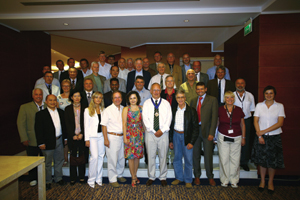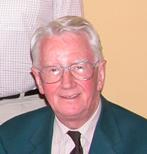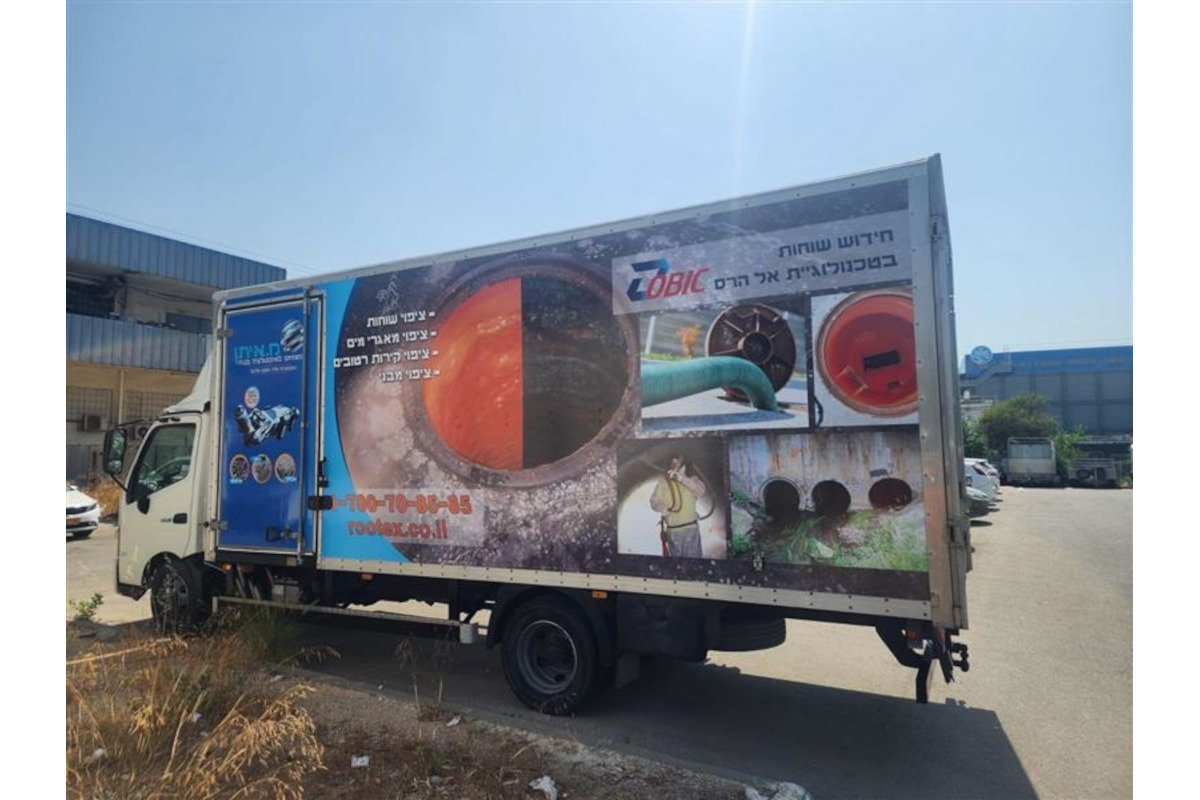ISTT Update
 No-Dig Mediterranean 2007
No-Dig Mediterranean 2007
There is a report on the success of ROMA07 elsewhere in this issue of TTI so that here, on the Society page, is some news of the other activities that occurred during the week.
As ROMA07 was the main event of the year in the ISTT calendar, the No-Dig Awards 2007 were presented at a Gala Dinner held at Restaurant Baba on Tuesday evening. The Award Ceremony was hosted by Joe Barsoom and winners received their trophies and certificates from ISTT Chairman Dec Downey.
The rules for each category are available in full from the ISTT but they all embrace the objective of recognizing and rewarding “the most notable advance or achievement in trenchless technology during the previous 12 months” — this means that the judging is not just for technical excellence but also for the entry that will catch the eye of the public and help to promote trenchless technology.
The Project Award was won by Brochier Ltd, Prague, Czech Republic, for The Ostrava Regional Drinking Water Supply-3rd Feeder. This impressive project involved providing a totally hygienic alternative water supply to allow the cement mortar relining of 22 km of DN 1,600 steel feeder pipe that had suffered from abrasion of the protective lining and corrosion.
The Product Award was won by Sewer Seal JF, which was the result of a collaborative project between the client Wessex Water; the material supplier De Neef (UK) and the installation specialist SDI-Unistride, all based in the United Kingdom. The Academic Award was won by Dr Hedeki Shimada, Kyushu University, Japan, for his research into soil stability during pipe jacking and the influence of slurries.The Student Award was won by Lucie Nenadalova, Czech Technical University, Prague, who undertook an extension of earlier student work at her university to improve the ecological assessment of trenchless techniques.
All the winning papers will be reviewed in TTI in following issues and the papers will also be available on the ISTT Web site.
A special award was also made to the French Society for its introduction in France of a procedure for public partnerships between civic authorities and the FSTT. La Charte de la Ville Sans Tranchée was signed in a public ceremony, with full media coverage, between a civic official and a director of the FSTT, pledging that the town or city will give proper consideration to use of trenchless techniques for work on its utilities in the best interests of the quality of life for the inhabitants. The Charte has already been signed by 18 elected officials of towns and cities and many more are expected to follow their lead. At ROMA07, the FSTT handed out packs of information to encourage other Societies to adopt the procedure in their own countries.
The annual ISTT International Board Meeting was held on Sunday, Sept. 9. In addition to the elections of officials, the Board also considered the future of the No-Dig.
Because trenchless technology is becoming more widely used, national conferences and exhibitions are increasing in number and size. The Board has noted that many national shows attract international delegates and exhibitors and that there is not now the requirement for trenchless practitioners to travel long distances to attend a trenchless event because they are no longer “few and far between.” This, in turn, has devalued the incentive to hold an International No-Dig in some continents and the Board felt that the ISTT should in future have a long-term objective of moving the No-Dig around the world so that the event moves consistently from one continental to the next on a planned basis. The current policy of co-hosting an event with a host Society in a selected continent, where appropriate, will continue, but the Board also approved the possibility of the ISTT being the single host for the No-Dig in a location where there is at present no Society. The Board authorized the Executive Sub Committee (ESC) to investigate possible locations for No-Dig 2010, for example, to include cities where there is no national society.
In the elections for Officers of the Society, Menno Henneveld saw the election and confirmation in office of his successor Dec Downey as the new Chairman and Sam Ariaratnam (NASTT) was elected Vice Chairman. Derek Choi (CHKSTT) was re-elected for a second term, and Karel Franczyk (CzSTT), Olga Martynyuk (USTT) and Norman Howell (UKSTT) were elected to the Executive Sub Committee.
ROMA07 also saw several older members take their leave from active roles in the Society. Ray Sterling (NASTT) retired from the ESC after his term of office as Past Chairman and Milos Karous (CzSTT) retired after a period of ill health. Ted Flaxman, Chairman Emeritus also took his leave of the Society (see below).
 The Ninth Trenchless Technology Colloquium Sept. 6-7
The Ninth Trenchless Technology Colloquium Sept. 6-7
The ninth Colloquium for academic, public sector and industrial research organizations was held in a meeting room very kindly provided by Telecom Italia, close to the ROMA07 conference hotel. Seventeen delegates from nine different countries attended and had a series of discussions selected and organized by those who attended. Details of the outcome will be available at www.teriac.org. The Colloquium was accompanied by the release, by Elsevier Science, publishers of Tunnelling and Underground Space Technology (TUST) of a special “trenchless only” edition with 16 papers covering a wide span of trenchless subjects. The journal is available from Elsevier Science (www.sciencedirect.com.)
 Ted Flaxman,
Ted Flaxman,
Chairman Emeritus
E W (Ted) Flaxman started his career with a degree in civil engineering at Imperial College, London. For the majority of his professional life, he was a partner in the consultant engineering firm of Binnie and Partners, specializing in very large sewerage projects that took him to China, Australia, Egypt, Turkey, Papua New Guinea, Suadi Arabia, Jordan and, of course, the United Kingdom. This work often faced him with the environmental damage caused by open-cut trenching, particularly in urban areas. So when he became president of the Institution of Public Health Engineers in 1980, he decided to focus his energies on what was then a possible solution known as “trenchless pipelaying.”
From that moment, trenchless as a technique in civil engineering circles, never looked back. By 1983, he had encouraged the formation of a Working Party to look at trenchless techniques, which in turn discovered that a plethora of methods were in use or being developed in many different countries. This led the Working Party to organize a first international conference with the catchy title “No-Dig 85,” which was soon oversubscribed with delegates from 20 countries. At the closing ceremony of the event, Ted proposed the formation of an International Society and with support from a number of senior figures from the engineering departments of some of the major utility companies in the United Kingdom, the ISTT was established in 1986 with Ted as its first chairman.
At first the ISTT was a Society in its own right with an international membership. It grew rapidly and in 1991, encouraged by Ted as chairman, the ISTT changed to its present organization of affiliated societies to allow national groups to tailor their arrangements to the cultures and needs of their members yet still retaining the advantages of being involved with a global group of like-minded enthusiasts in the ISTT family. In 1993, Ted handed over the chairmanship to Michel Mermet of the FSTT and he accepted the appointment as Chairman Emeritus, which he has held until he took his leave from the Board on Sept. 10.
In the history of the emergence of trenchless technology as an important specialist discipline within the broad boundaries of civil engineering, Ted’s contribution in bringing together engineers, chemists, geologists, businessmen, economists, entrepreneurs and academics from around the world who have in trenchless technology a common interest, will be significant. He has been a confidante and adviser to five chairmen who have succeeded him and a great friend and colleague to many individual members.
With his retirement, the ISTT loses his knowledge and experience of trenchless technology in its global setting, but has a strong foundation on which to build and carry forward the aims and aspirations of its founding members “to promote and advance the science and practice of trenchless technology.” All of us wish Ted, and his wife Joan, a very long and happy retirement.
26th International No-Dig 2008 Moscow, June 3-6
It is with great pleasure and excitement that the ISTT and its members look east in 2008 to the first No-Dig to be held in the Russian Federation. No-Dig 2008 Moscow has been in preparation for nearly three years.
Because the RSTT is still expanding and working hard to raise its profile and status in a massive country that stretches from Europe to the Pacific and from the Arctic to the Caspian Sea, an agreement has been made to hold the No-Dig in conjunction with an already well established Russian environmental exhibition ECWATEC and a smaller utilities exhibition “City Pipe.” The total exhibition space is expected to exceed about 20,000 sq m and, based on previous events, a visitor foot fall in excess of 15,000 can be expected. Visitors to the Crocus Centre will have access to all three exhibitions and in addition, delegates to the No-Dig will have their own conference of peer-reviewed papers, possibly some site visits and the usual Gala Dinner and No-Dig award ceremony.
The response to the issue of the first announcement in the previous issue of TTI has been excellent. Interest in the sponsorship packages has been exceptional so that just a few remain; 25 major exhibitors have booked space and the call for papers (abstracts by Dec. 25, 2007, please) has already had a good response. Provided sufficient papers are received, a session dealing with the vexed question of “trenchless in a cold climate” is intended to be of special interest to local delegates although the temperature in Moscow in June will be hovering around a pleasant 18 C (65 F).
The Web site for MOSCOW 2008 is www.nodig2008.ru and its organizers, can be contacted at nodig2008@sibico.com.




